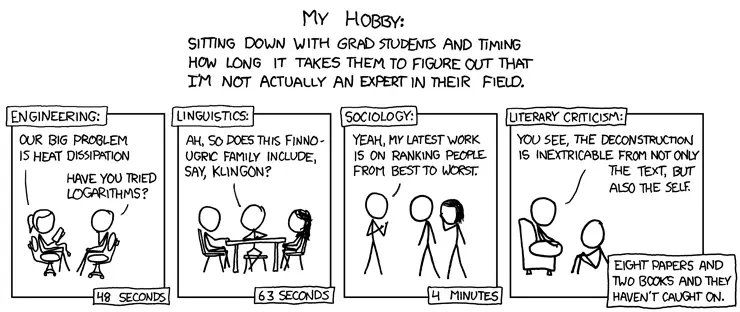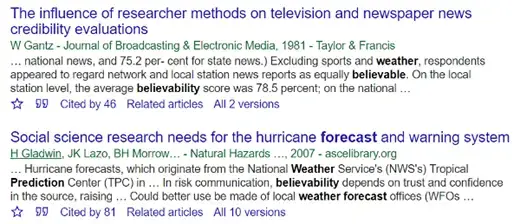This article comprehensively describes the what, why, where, and how of literature review. In addition, it provides tips on when to stop writing it with a supplemental video. Read on and stop wasting your time looking for tidbits of information about this essential part of research writing.
Yes. What I tell you is the truth. I wrote this article just for you to spare you from jumping from one page to another page in Chrome, Firefox, Safari, or whatever your favorite browser is looking for information about the literature review.
The other day, it dawned upon me that I’d better put all my literature review notes in this article for the maximum benefit to readers. I diligently searched information online, from printed books and e-books, in addition to my experience writing this portion of research or thesis. Here’s the place I write all the information I have gathered.
If I missed anything, feel free to comment below. I’ll incorporate your suggestion as long as it doesn’t duplicate what I have discussed.
I originally wrote this article for my students as part of my innovative approach to online learning during the COVID-19 pandemic. I call it the Blended Website Learning System. It just works as students learn both synchronously, semi-synchronously, and asynchronously despite the challenges of online learning.
Synchronous learning means real-time lectures with interaction via Zoom, and asynchronously when students read and accomplish the modules with guideposts that I have prepared for specific subjects. Semi-synchronous learning means the student initially connects, loses connection due to a poor internet connection, then connects again. I patch up by recording the discussion and uploading it for my students to download and listen to the complete proceedings.
Given the nature of this topic, this article will be invaluable information to students or colleagues looking for information about literature review as an essential part of a research, for free. Those unfortunate students in the remotest places on earth who have difficulty accessing the internet will greatly benefit. More so at this time when virtually everyone taking advanced studies takes refuge to online material due to the pandemic.
Now let’s zero in on the literature review: the What, Why, Where, How, and When to stop writing it. If you are in the process of writing your literature review, you may jump right to the information you want using the table with linked topics below.
What is a literature review?
Literature Review Defined
The literature review is a critical survey of the existing and preferably current (3-5 years) scientific literature on a previously identified research topic or variable. In a thesis, it is usually found in Chapter 2. In condensed, article versions of a research paper published in a scientific journal, the review of literature integrates with the introduction or background of the study.
The literature review explores what researchers all over the world have done so far to explain a given phenomenon using a method that systematically examines how it occurs. Thus, it contains different theories and methodologies that help unravel the mystery of unexplained facts or events.
A literature review is a critical description of the literature about the research topic that you as a researcher chose to work on as part of your thesis proposal or research paper. Emphasis is given to the word “critical.” This implies that you have read a great deal of literature such that you can see the issue at hand and make an informed assessment.
Why do you have to write the literature review?
Why do you need to write the literature review? A literature review is written before a study commences for basically two reasons:
- to prevent duplication of studies made on a phenomenon thus saving time, money, and effort; and
- to demonstrate the “gap” in knowledge on a given topic thus exactly pinpointing where the new study will be focused.
The literature review reveals how extensively, or how narrowly, the phenomenon has been studied by specialists or experts of the field. It uses secondary information. It serves as a general guide for other researchers as they try to affirm, refute or offer new explanations to a fact or event that they are interested in.
The conduct of research requires a literature review. The review enables you, as a researcher, to get a good grasp of the topic at hand.
Where to Source the Contents of the Literature Review
Visit open access journals
You must be careful in selecting the literature from websites that will be part of your review because of the preponderance of “scientific” journals that take advantage of unsuspecting researchers looking for a platform to publish their findings in open access journals. To prevent being victimized, evaluate your sources for reliability.
Jeffrey Beal, a librarian at the University of Colorado, took time to list some questionable open-access journals. If you have been invited to publish in these journals or serve as editor or member of the board, think twice.
Browse the site and evaluate the quality of the articles posted. Poor grammar, wrong spelling, poorly formatted articles, or garbled information are tell-tale signs of predatory journals.
It is easy to be misled as everybody can easily access a large body of literature using the internet. You must therefore adopt a prudent attitude in selecting literature from websites that will help you develop a good thesis statement.
As open-access journals become popular sources of scientific literature, a good researcher must develop a keen eye in selecting the wheat from the chaff. Being keen is one of the characteristics of a good researcher.
One of my favorite open-access sites where I can download literature on many topics is www.doaj.org. On this site, there are full papers available for free download. You need to be patient as you browse the site using your keyword. Elsevier also has a list of open access journals here.
There are many other open access journals if you have the time and the patience to do the surfing. Open access journals are the default choice particularly to those who do not have the funds for a personal subscription.
Verify if your library has paid subscriptions to popular scientific journals which offer more choices. This will cut downtime for you to be able to understand current research and establish the state of the art.

Ask a professor for copies of their article collection
One MS student approached me one time asking if I have literature on community-based resource management. Indeed, her inquiry bore fruit as I subscribe to a biannual environmental science journal. I lent her six issues and she was so grateful for the help.
Don’t hesitate to approach someone who might be working on something similar to your line of interest. Almost always, there’s a pile of literature that he or she can share with you so you can quickly browse the topics.
Join sites where scientific articles are shared
One of the growing websites that many scientists join is academia.edu. A colleague reminded me that is a good source of scientific articles because some generous scientists upload and share their articles for everyone to peek into and possibly include in their list of related literature.
I uploaded an article in portable document format (PDF) myself and I noticed high traffic on that single article alone. Now, academia.edu boasts 168,557,587 member academics and researchers.
You may also write those scientists who might be interested in your proposed investigation. There’s a good chance the author will respond to you given the citation potential of their papers. Be grateful by citing the paper when the author is gracious enough to share with you the findings. The methodology part is an excellent guide for your own research.
Visit relevant government offices
A trip to government offices that usually have mini-libraries store information on office programs, projects, and activities plus other informative materials for public use can help you enhance the quality of the information in your study area’s profile. Statistics on demographics, detailed maps, and recent public service initiatives are commonly found in these offices.
Research is meant to improve the quality of human life, and the government is tasked to provide welfare to the general public. Thus, you can orient your research to address issues and problems that were already identified in such government offices.
If your study is about the environment, then the sensible choice is the environment agency of the government. You can help improve on or enhance current environmental policy using identified issues and concerns on the environment as government employees interact directly with local communities. Surely, your research will be appreciated by policymakers.
Replicate yourself
Why do the literature review by yourself when you can engage the help of others — for a fee, of course. I did this when I was conceptualizing my research topic. That happened during the time when the internet boom has just begun and open access journals are not yet available.
I learned that there was an enterprising group of graduate students who offered to do the literature review for a fixed rate. They do all the legwork, i.e., scrounging the libraries and finding relevant materials based on my set of keywords and problem statement.
That service surely saved me a lot of time while I narrow down my research topic using my collection of related literature. The added material strengthened my arguments and/or redefined the direction of my investigation.
Organizing the Literature Review
Write the literature review along with the stated objectives of the study
There should be a one-to-one correspondence between the objectives of the research paper and the literature review. Tackling the subject bearing the objectives of the research, or guided by the statements of the problem, helps you form a logical central argument in your study.
Prioritize the references
Prioritize your collection of literature according to the most rigorously reviewed publications as follows:
- Scientific articles with international circulation published by reputable journals,
- Books or chapters in books published by publishers of known repute,
- Articles in refereed national journals,
- Papers in national and international conference proceedings or research reports,
- Ph.D. dissertations and Masters theses, and
- Websites and articles in non-refereed journals.
Given the emphasis on gender equality in recent years, you can prioritize scientific papers written by women to strike a balance in perspectives in the pool of literature traditionally dominated by men. Be conscious, too, of making your paper inclusive of different geographies as pointed out by Maas et al. (2021).
Organize your review of literature by themes
Look for keywords that can represent the findings when clumped together. Group similar arguments together and contrast with opposing views. Thereafter, make a synthesis of the discussion and point out the gaps in knowledge or vague areas that are left unresolved.
Things to Bear in Mind Before Writing the Literature Review
Writing a literature review is a tedious task unless you apply a systematic approach to it. But first, you must get back to the very reason why you are writing the literature review to appreciate its role in completing your research paper or thesis.
Since the internet is a great source of information and is nowadays a common destination for researchers who want to access the latest information as quickly as possible, care must be exerted in selecting research papers that will help you build your thesis.
Reinventing the Wheel
Reviewing the literature prevents the duplication of previous work done on the topic identified. Thus, literature review saves money, time, and effort. It prevents the “reinvention of the wheel.” This idiomatic expression means that doing something that others have already done is a waste of time.
Reading a great deal does not mean that you will just read any literature that comes your way. This means that you have read literature that are backed up by evidence, meaning, scientific papers, or articles that are found in peer-reviewed journals or reliable sources. Reliable sources ensure that you have a good foundation in making a thoughtful position embodied in your thesis statement.
Clear Understanding of the Research Topic
A literature review revolves around a central theme – the research topic or research problem. State your research topic clearly to guide the literature review. A good review of literature starts with a good understanding of the research topic.
Writing the research topic in question form facilitates the literature review. The research problem arises from observing a phenomenon that prompts the need for a research investigation.
For example, the disaster response team observed that despite government warnings to evacuate in anticipation of a strong typhoon, many residents opted to stay in their homes despite the threat to their lives and property.
Several questions arise such as:
1. Does ignorance of the government’s warning of the impending danger indicate that people do not trust weather predictions?
2. Do residents value their property more than their lives?
3. Do the residents feel that they will survive the disaster despite its severity? What made them feel that way?
Use of Relevant Keywords in the Search for Related Literature
The three questions clearly state the focus of the review of the literature. One can deduce relevant keywords for online search of related literature. For example, for the first problem statement, you can use the keyword “believability of weather predictions.”
Typing “believability of weather predictions” in Google Scholar returns the following related literature:

The above figure shows that other researchers have conducted studies related to the first problem statement. Two out of ten articles returned relate to the first question. We can say then that the topic is researchable. Figure 1 also shows the following information:
- the title of the study (in large blue fonts);
- the authors with the major author underlined, the date and the publisher (in green);
- a meta description that summarizes the page’s content (three lines of description in black highlighting keywords related to the searched keyword);
- information on article citations (46 and 81 respectively in the two articles); and
- a link to related articles.
Clicking on the title link of the first article, the following abstract comes up:
Abstract
This study assessed responses to variations of several notable news credibility measures. TV news was evaluated as more credible than newspapers, although its margin of supremacy was a function of researcher operationalizations of the concept.
The study is about news credibility and the influence of the researcher’s method on news credibility. Television news was found more credible than newspapers. But we are not after credibility comparison of television and newspapers. This finding is not the kind of information that we want. So we proceed to the next article about hurricane forecasts and warning systems.
Clicking on the title link of the succeeding article, the abstract appears. Although the article’s focus is on hurricane warnings, you can discern that the article discusses high-priority social science issues. Again, this write-up appears to be still out of the topic.
However, getting back to the meta description and upon closer scrutiny, there is a piece of important information that may be of use. It says, “In risk communication, believability depends on trust and confidence in the source, raising …” (Figure 3). This statement is important information that a researcher can follow through. The article, after all, may be relevant to what we want. We need to secure the article.
We are fortunate that upon checking on the article again, there is a link at the far right that indicates a pdf file (encircled in red) is available for download. After downloading and reading the article, I found out that there are many relevant statements related to the issue of the believability of predictions.

It will now be easy to collect other articles similar to the above article using the same procedure. Identify the relevant article title, read the meta description, and explore the availability of the material. With patience and a little imagination, you can collect the literature that you need for your research.
Landmark Papers: Most Cited
Researchers consider some research publications with high regard. These publications are referred to as landmark papers. Landmark, must-read, papers have become popular among researchers as sensible sources of information. Usually well-known authority figures in the field author these publications.
However, the popularity of a paper does not necessarily mean that the arguments, hypotheses, or theories presented by that author elude correction. Contemporary researchers, armed with new insights from pieces of evidence gathered through meticulous research or experimentation, can debunk the philosophies advanced by an authority figure and render them as myths.

Theories from well-known personalities can always be challenged as new information comes in. For example, Aristotle, one of the greatest intellectual figures of western history, proclaimed that women have fewer teeth than men. Of course, he missed counting the teeth to verify his statement. Until… somebody challenged the idea by just suggesting “Let’s count.” A simple experiment ended the idea from a well-known figure.
Critically evaluate the literature
A critical evaluation of the literature can be more systematic by asking yourself the following questions:
- Has research been done before on the topic that you have identified?
- What are the salient findings of the researchers about your chosen topic?
- How are the findings relevant to your study? Do those findings directly connect to what you have in mind?
- What makes your study unique or different from what has been done before?
- Is there agreement or disagreement in the findings of the researchers?
- Are there vague areas or flaws in the methods or methodology of the reviewed literature?
- How can I fill in the gap in knowledge?

How do you write a literature review?
After you have gathered the necessary literature related to the topic you have chosen to do research on, the next step is to write the literature review. Writing the literature review is quite a challenge, as you will have to rewrite, in your own words to avoid plagiarism, the scientific articles that you have read. The important findings of an article can be described in a paragraph of a few sentences.
The following steps make the review methodical:
Step 1. Rewrite the article to summarize the salient points
What information will you include in the description of other researchers’ work? Essentially, the paragraph should contain the following:
- The author(s) and date when the article was published;
- What the authors did (the method);
- The variables they examined or manipulated;
- A short description of the major findings; and
- A brief explanation of relationships, trends, or differences between variables.
Here’s an example:
Regoniel et al. (2017) examined the adaptation options of stakeholders to typhoons in two coastal communities, one directly exposed to the open sea while the other is buffered from strong winds by islets near the coast. The coastal residents in the community directly exposed to strong typhoons built concrete breakwater structures to mitigate the effects of storm surges and strong waves. On the other hand, the other community opted to reforest the mangroves along the coastline.
Apparently, the intensity of typhoons caused the difference in response to typhoons, one group opted for a quick fix by putting up a breakwater while the other chose mangrove reforestation as a long-term strategy because there is no immediate need to reduce the impact of typhoons.
Step 2. Decide on the arrangement of paragraphs
Which article description should go first?
Some researchers arrange by topic or theme, while others prefer to organize the articles using the set of questions posed in the introduction, specifically, according to problem statements arrangement. The latter appears to be more effective as the issue or concern orients the reader.
The literature review serves as an attempt to answer the questions posed in the early part of the research paper, but of course, it is unable to do so because the review should
- point out the “gap” in knowledge,
- show the insufficiency of current literature to resolve or convincingly explain the phenomenon in question, or
- merely describe what attempts have been made so far to explain the phenomenon.
Step 3. Link the paragraphs
The next step is to link the different paragraphs using introductory statements and ending with concluding sentences. You may add transition paragraphs in between the descriptions of studies to facilitate the flow of ideas.
Step 4. Write your opening and closing paragraphs
At the beginning of the Literature Review section, add a paragraph that explains the content of the whole write-up. The introductory paragraph serves as the reader’s guide on what one expects to read in the review. End with another paragraph that briefly summarizes the shreds of evidence that support the thesis of the research paper.
Writing the literature may be difficult at first, but with careful planning, practice and diligence, you can come up with a good one. Once you’re done with your literature review, more than half of your thesis writing task is already done.
When do you stop writing the literature review?
When do you stop searching the literature? The following tips will help you decide whether to go on searching the literature or not on your research topic.
Stop searching the literature when literature contents are repetitive
As it is common nowadays to use online databases, you may stop searching the literature once the same articles appear even when you vary your keywords on a particular topic. You can be confident that whatever you have missed may not matter that much.
Examples of online databases to explore include the following: Google Scholar, Scopus, Directory of Open Access Journals, ProQuest, African Journals Online, arXiv, BioOne, among others. Wikipedia lists an extensive collection of academic databases for free or via subscription.
My personal experience in using Google Scholar showed relevant articles for my chosen topic in the first 20-30 titles or links. Reading the meta description for each title helps me decide whether to read the abstract or not. The meta description is that snippet of information found just below the title of the article.
Two examples of meta descriptions are given below for the keyword “believability of weather predictions.”. The meta description is computer language for the summary of the contents of a page for the benefit of users and search engines. It is that snippet of information found after the green link or the third line of text in the two examples.

You can exhaust your literature search by looking at the bibliographic entries of articles. That is if you can access the whole paper. Open access articles may be available. While subscription journals are still considered suitable reference materials, open access articles are gaining ground. The European Commission promotes open access publishing gains to better and efficient science as well as innovation.
Point of Saturation of the Literature Review
Familiarity with the research or investigation made by other researchers enables you to understand the issue at hand better. Upon reading a substantial number of research studies, there comes a time when you encounter nothing new. If you have experienced this, you have reached the point of saturation. Thus, you can confidently say that you have read enough scientific papers related to the topic.
Consider your submission deadline
To be pragmatic about it, you need to deliver the goods within a specified period. If you are given a month or even a few weeks to search the literature, you do not have the luxury of time to write an extensive literature review.
If you are doing your literature review within a semester, then, by all means, keep to that schedule. Your “free time” may be windows of one to two hours of reading in a day as you comply with the other requirements of the course.

It would help if you had adequate time to synthesize the literature. Come up with your conceptual framework within a reasonable period. After reading about 20-30 references, you may likely have already conceptualized something significant. Keep to your deadline. Planning a strategy on how to do things on time can help you achieve your task.
Finding a meta-analysis, for example, can save you a lot of time. A meta-analysis systematically assesses the results of previous research to derive conclusions about that body of research. In effect, it brings relevant literature together in one study.
Thus, a synthesis facilitates literature search. Just update or enhance the composition to come up with your conclusions or synthesis.
The gap in knowledge has been found
Stop searching the literature if you have found a knowledge gap. A research gap pertains to unexplored areas of study. It takes a while to discern such a gap, so you need to be patient in reading the literature and note down the significant findings.
Knowing when to stop searching the literature depends in part on your familiarity with the topic at hand. Hence, it pays to study something where you become more familiar, as you go through your academic pursuit. That is the mark of being a specialist in your field.
It all boils down to the study’s objectives and having a clear purpose, the time you have available, and the guidance of your experienced adviser familiar with the subject.
In my experience, the limiting factor is time, as you can’t afford to capture everything written about the subject. Find the most recent landmark or seminal works about your specific topic whenever available. That will give you more confidence that indeed you have read the most relevant references.
Professor Liesbet van Zoonen, of Erasmus University, gives some more tips on when to stop writing the literature review in the following video. Grab a cup of coffee, relax and listen intently to what she is saying.
Concluding Statements
In conclusion, the literature review sheds light on what has been done so far about the research topic. It reveals “gaps” that warrant further investigation. Good research practice presents this gap in knowledge in the introduction of the study. Statement of objectives or problem statements to address that gap follow. Hence, a follow-up study produces new information.
There you go. I hope you both learned and enjoyed reading this article. Keep safe and be confident in writing your literature review in the safety of your home.
References
Ashton, W. (2015). Writing a Short Literature Review. Retrieved on January 6, 2015 from http://www.ithacalibrary.com/sp/assets/users/_lchabot/lit_rev_eg.pdf
Maas, B., Pakeman, R. J., Godet, L., Smith, L., Devictor, V., & Primack, R. (2021). Women and Global South strikingly underrepresented among top-publishing ecologists. Conservation Letters, e12797.
Regoniel, P. A., Macasaet, M. T. U., & Mendoza, N. I. (2017). Economic analysis of adaptation options in Honda Bay, Puerto Princesa City, Philippines. EEPSEA Research Report, (2017-RR3).
©2021 October 30 P. A. Regoniel


